On Monday, following the dramatic endings to their respective group stages, Croatia and Spain will go toe-to-toe once more. Both teams have had mixed campaigns but both also looked much improved in their third and final clashes before the knockout stages of EURO 2020.
Now, with wind finally back in their sails, the stage is set for a scintillating clash. Can Zlatko Dalić’s new-look tactics get the better of Luis Enrique’s rampant squad? This tactical analysis will aim to answer that question and try to predict the outcome of the game.
Predicted lineups
Interestingly, both Croatia and Spain have experienced some changes going into the third matches of the group stages. Dalić and Enrique had to find new and improved formulas to finally unleash the true potentials of their respective squads and they have managed to do exactly that. So it’s fair to assume they won’t tinker too much with systems that work.
For Croatia, that means an almost identical starting XI to the one that beat Scotland 3-1 in Glasgow. Dominik Livaković is set to start between the sticks and Josip Juranović could and should return to the lineup as well. Due to Dejan Lovren’s suspension, we’re likely to see Duje Ćaleta-Car partner Domagoj Vida down the middle while Joško Gvardiol, one of Croatia’s best performers, should man the left-back position. In midfield, Marcelo Brozović, Mateo Kovačić and Luka Modrić will most likely return with Nikola Vlašić playing in his floating role between the lines despite being a winger on paper.
Finally, Ivan Perišić is almost guaranteed to start on the left with Bruno Petković returning as Croatia’s versatile striker in a rough variation of a 4-3-3 formation.
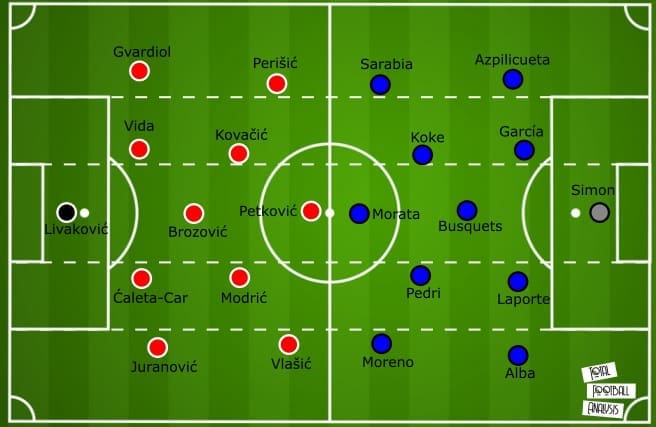
When it comes to Spain, we expect them to field the same team that thrashed Slovakia. Unai Simon is set to start once more with Eric García and Manchester City’s Aymeric Laporte forming a tandem at centre-back. Barcelona’s Jordi Alba will be the team’s left-back while César Azpilicueta could retain his position at right-back ahead of Marcos Llorente again.
The ever-important midfield of Sergio Busquets, Koke and Pedri is set to return too with a front three of Gerard Moreno, Juventus’ Álvaro Morata and Pablo Sarabia finishing the traditional 4-3-3 system for the Spaniards.
Spain’s positional rotations
Even though on paper Spain are deployed in a 4-3-3 formation, due to their fluidity in attack, that is rarely so on the pitch. Against Slovakia, we’ve seen a new structure in possession that Enrique is likely to keep for the clash with the Croats. Instead of deploying extremely attacking full-backs, as is usually the case, Spain will keep both Azpilicueta and Alba deeper to assist the first phase of build-up.
The former often forms a back three with the centre-back duo, ensuring numerical superiority and/or inviting the second line of the opposition’s defensive block to step up. This is the crucial first step in their aim to bypass the press and vertically progress the ball. Another aspect worth mentioning is the width provided by the wingers, Sarabia and Moreno, who will hug the touchline and stretch the defenders’ lines horizontally.
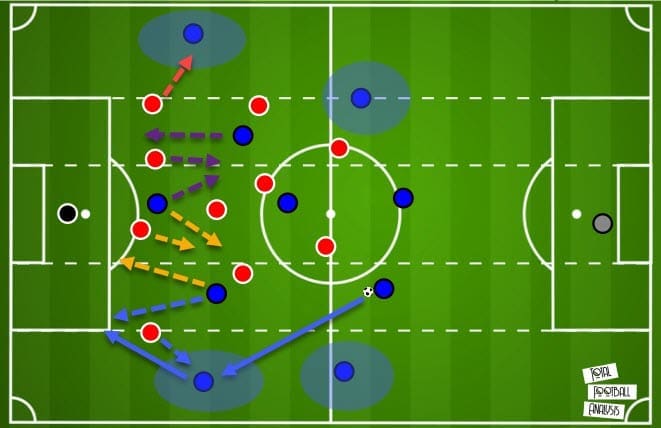
From their progression from the first and the second phase, there are several different rotations they mostly aim to use and are likely to use against Croatia. All of them revolve around movement manipulation and overloads. The midfield three of Busquets, Pedri and Koke are also essential as their positioning directs the attacks. One big change from the first two games to the third one in Enrique’s tactics was adjusting his no.8s.
Pedri and Koke now occupy slightly higher positions on the pitch, providing outlets between the lines and often in their respective half-spaces rather than dropping excessively deep, which was especially true for the former player. Pedri will shift across the pitch depending on the needs of the team and the way their build-up is progressing.
In our first example below, we see him move away from the ball and burst into space that was created by Moreno pulling one of the defenders out of their structure. Due to the numerical superiority in the first line, Laporte can run with the ball and deploy a direct pass towards the flank and then the Villarreal ace immediately sends it through to Pedri.
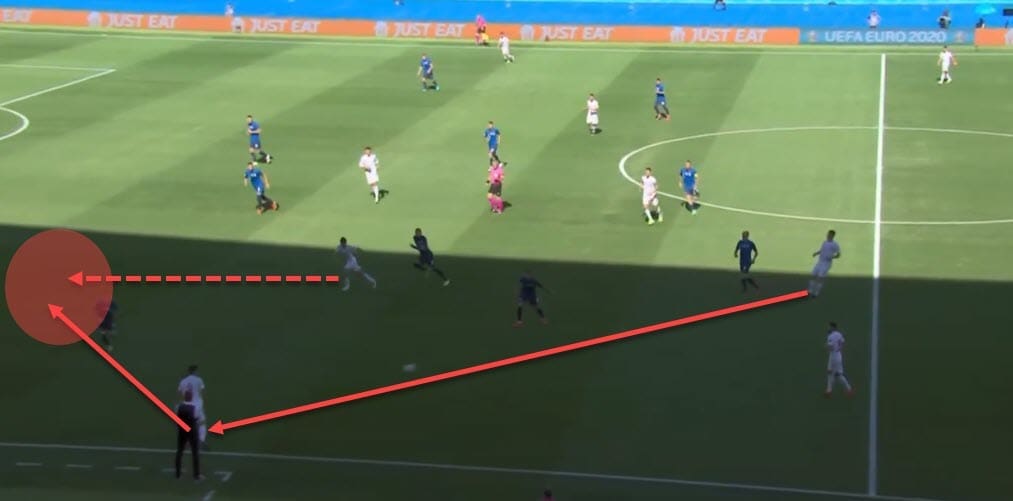
We can also see this combination in the initial tactical board at the beginning of this section of the analysis. Similarly, Pedri can move towards the ball to receive and then progress forward but his movement is not always with the intention to take possession but also to free up his teammates(s). Spain are all about creating those overloads and they will use Morata to do so.
The striker will drop deeper to form a quartet with the three midfielders and effectively overload the opposition midfielders. In that case, and especially given the tight man-marking structure Croatia utilise, one of the centre-backs is likely to follow, vacating his spot and enabling either Pedri or Koke to burst forward.
Notice below what that looked like against Slovakia.
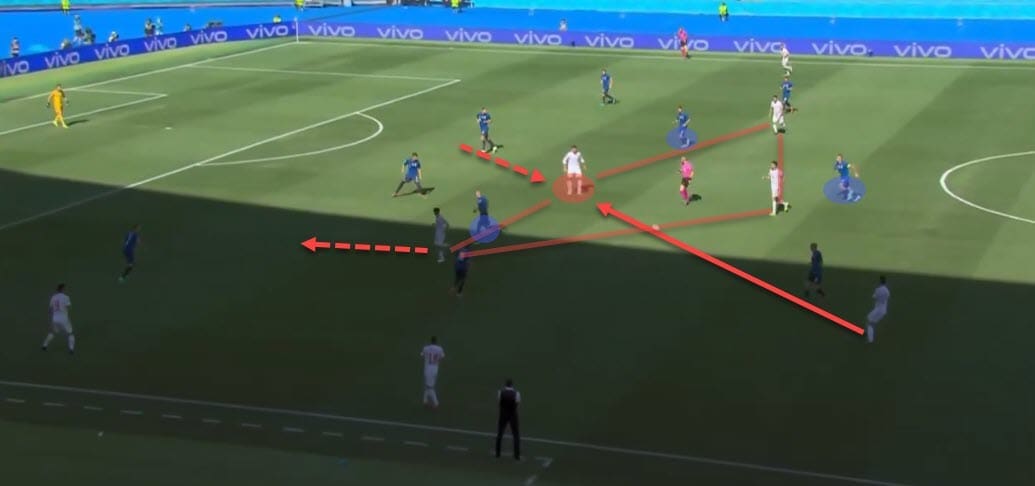
In this instance, Pedri can move up and into the channel that is now open towards the left. A similar thing happened on the other side when Morata decided to shift towards the left side of the pitch, again dragging the marker with him. This isolates Koke with the other centre-back and with dynamic superiority in Spain’s favour, the burst forward would favour the attacking team.
In this instance, Pedri doesn’t opt to pick out Koke with a pass but this still shows us how this mechanism can be used to disrupt a compact defensive structure.
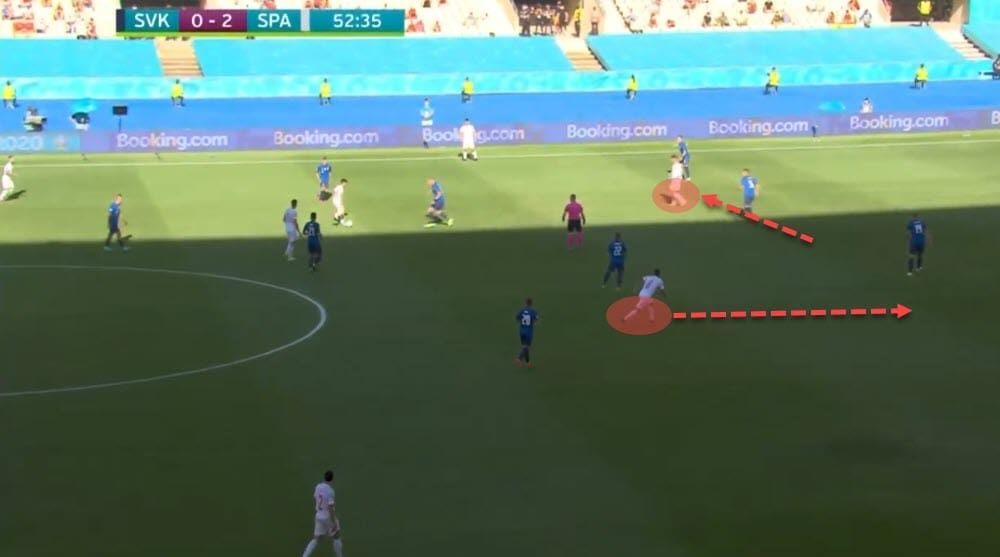
Croatia’s setup in defence and the efficiency of their press will therefore be crucial. Statistically, they are among the highest pressing teams in the tournament and it’s reasonable to assume they won’t abandon their tactics against Spain. However, as intense as their defensive phase has been, they have shown some liabilities in their structure.
When pressing, they will assume a strict man-marking approach with Modrić often pushing up and Brozović picking up his player instead. Croatia will try and match their opponent man to man but due to the lack of compactness between the first two pressing lines, teams have found ways to play through their press, as can be seen in the example below against Scotland.
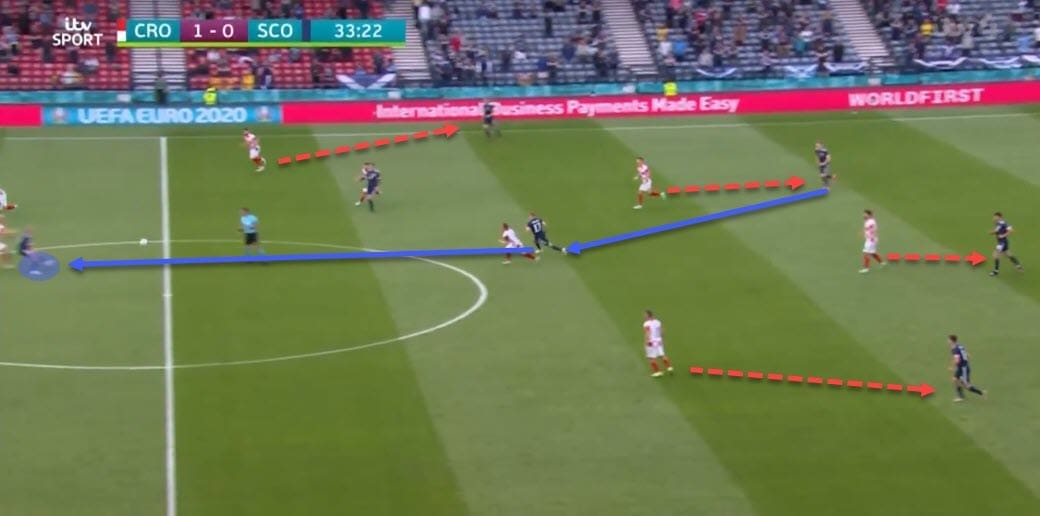
It’s interesting to note that Spain are likely to use similar principles to escape this type of pressing too. Dropping the no8s is likely and then either of them or the pivot, namely Busquets, can lay the ball off to the dropping striker, just as Scotland have done above. If Croatia fail to close down the midfielders and prevent them from turning with the ball or playing it first-time, they will suffer in this phase.
Another big issue plaguing their defensive organisation is the lack of staggering in a set mid-block. Croatia will often transition to a 4-4-2 but against Scotland, their midfield line was often flat and in the same horizontal line, which made it easy for the opposition to bypass.
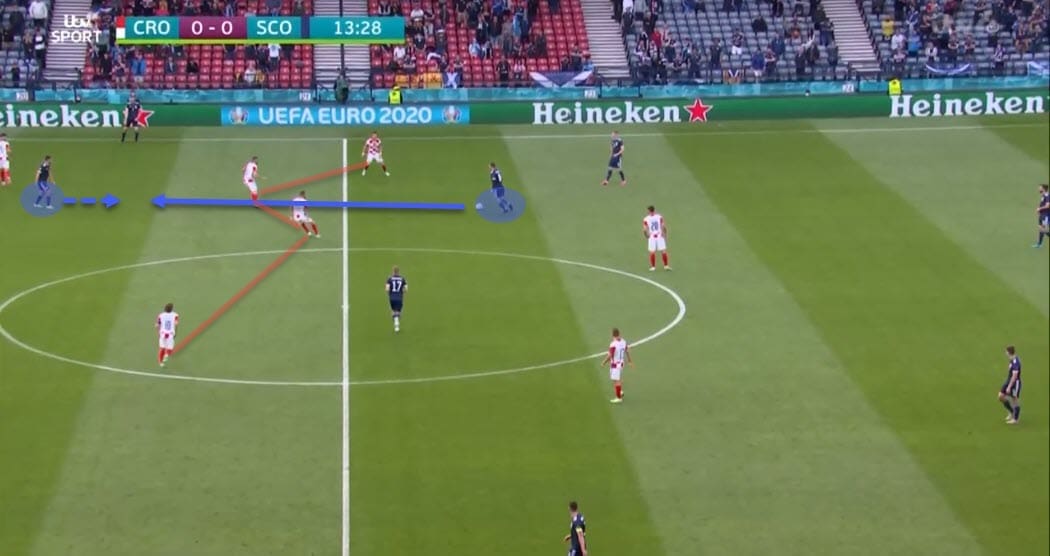
You can imagine that one of the centre-backs would easily pick out the no8 in this scenario for Spain or if a no8 drops, Morata can follow suit and receive in the half-space if necessary. All of those scenarios are possible and a real danger for Croatia. Here’s another example and another likely scenario for Monday.
Again, the midfield line is not staggered properly and after one of them is forced to react and break the structure, space appears behind his back that the opposition can exploit. Here we can also see the possibility to manipulate the centre-backs, opening a channel for a runner from deep.
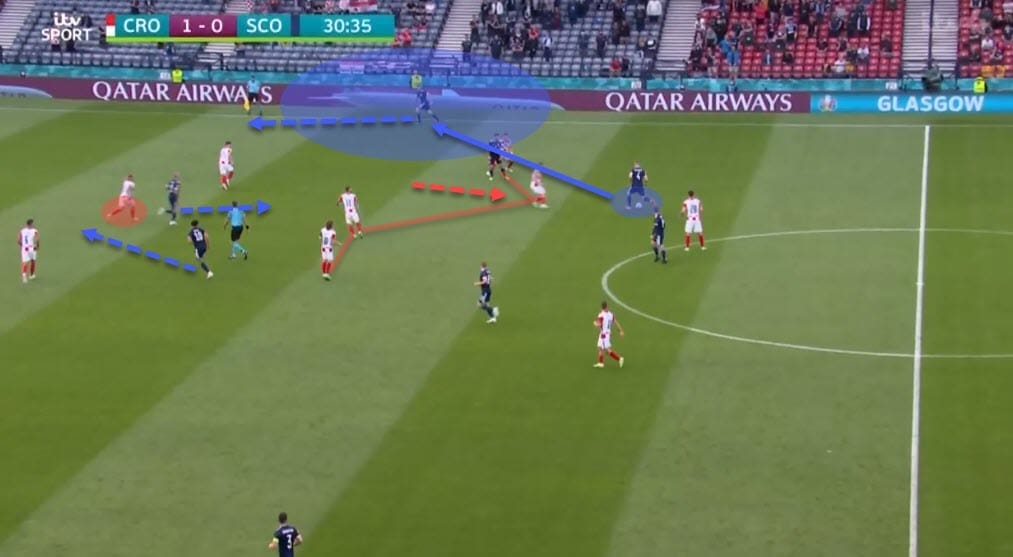
Croatia’s improved structure
As mentioned previously in this tactical analysis, Dalić has also tweaked his structure for their third group stage clash. In came Petković and Vlašić and Juranović made an appearance on the right. All of those changes made a positive impact against Scotland and offensively, Croatia have a lot of potential.
It’s still uncertain, however, which blueprint they’ll follow heading into the clash – are they going to sit deep and soak up pressure, waiting to burst forward with speed? Or will we see the aggressive Croatia we’ve seen in the first three games of their EURO 2020 campaign?
Both approaches have pros and cons but given their style and success in the third game, it’s fair to assume the latter approach will prevail. Below is a tactical board depicting their main ideas in possession.
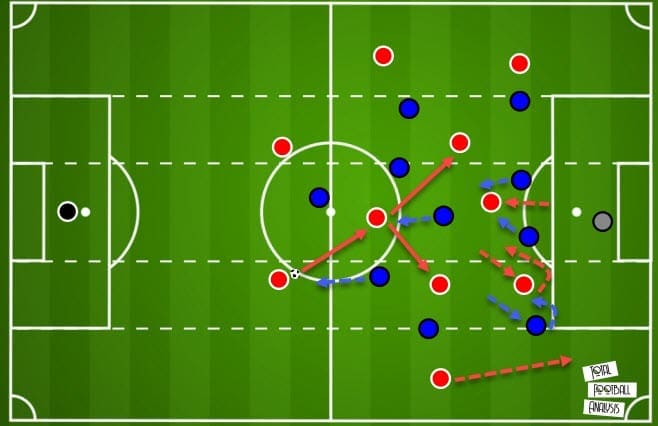
The main differences between this setup and the one we’ve seen in the first two games lie in the positioning but also in personnel as well. Firstly, Petković is the type of striker who will drop deep to create overloads, just like Spain do, but also use his incredible back-to-goal ability to deploy lay-offs out wide and feed runners in-behind the opposition’s line. Secondly, with the midfield trident, Modrić and Kovačić can stay in their respective half-space as no8s while Vlašić plays a floating role and acts as the link between midfield and attack.
This gives Croatia a presence between the lines and injects much-needed verticality into their build-up phase. Spain are likely to deploy a 4-1-4-1 defensive structure that won’t necessarily press high but will transform into a 4-4-2 when moving up. The trick, however, is to escape their counter-pressing and quickly move the ball up the field and into the striker, namely Petković.
The Dinamo Zagreb star will be key here because of a) his movement and b) his lay-offs. When he drops deeper, Petković often creates space for Vlašić to run into and with exceptional passers in midfield, Croatia have been able to pick him up multiple times against Scotland, which is essentially the structure they should be aiming to mirror again.
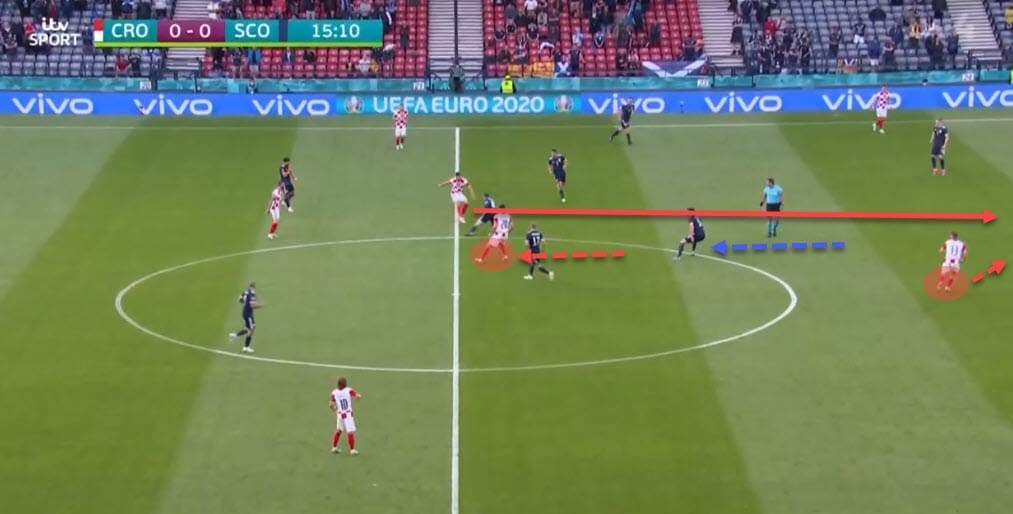
Similarly, when Petković drops deeper, he will usually not only drag a defender out of position but will also be able to use his strength and technical ability to relay the pass to oncoming runners. In our next example that just so happens to be Vlašić again as he’s in the aforementioned floating role that enables him the freedom to drift across the final third.
Here Modrić finds Petković and he then immediately sends the ball into Vlašić’s feet as Croatia reach the box in two swift moves.
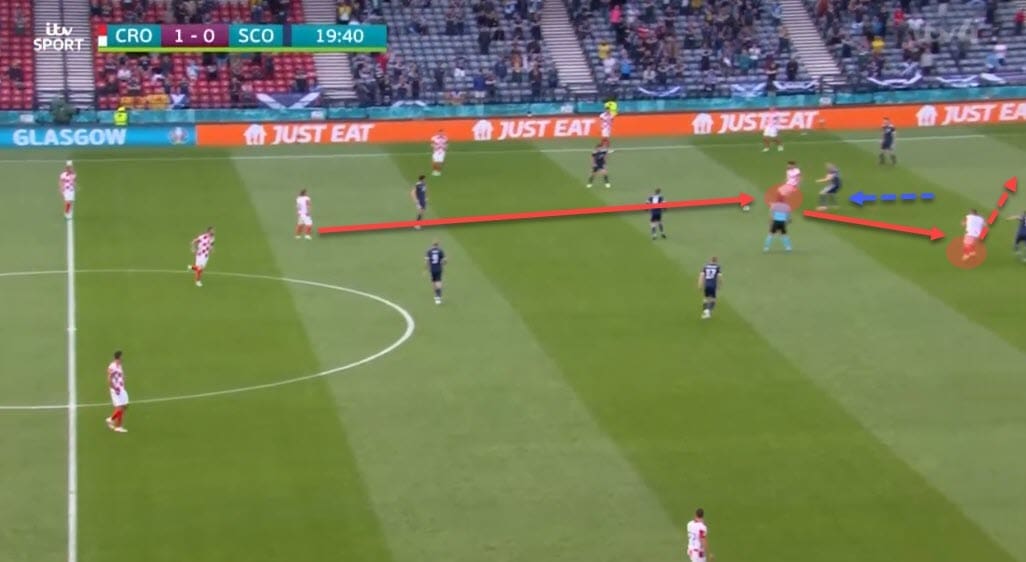
This is a tool Dalić can use to escape the counter-pressing and also instigate counter-attacks. Sweden have done the same thing by utilising Alexander Isak’s great technical skill in very much the same scenarios.
Below is an example of how they escape the counter-pressing and immediately eject runners behind Spain’s defensive structure. With pace and skill to deploy those passes, Croatia could threaten to break through quickly, causing damage to their opposition.
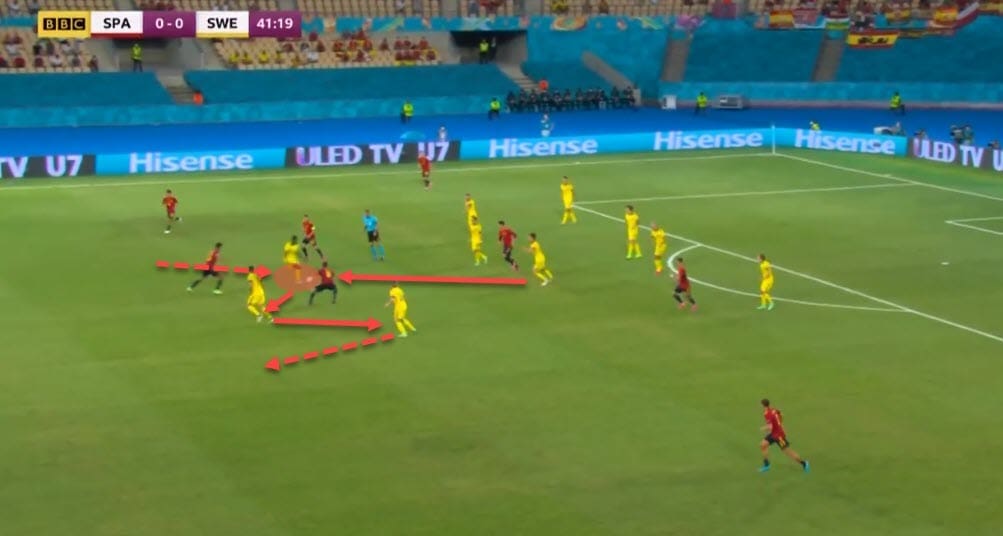
Notice how Isak is utilised in the same role as Petković could be in this instance. He drops deeper to receive but only makes a single touch to start the transition. Of course, if Croatia continue with their aggressive approach, there’s always the possibility to use Petković in high recoveries that directly lead to a chance at goal.
We’ve seen Slovakia try a similar thing and while they were ultimately destroyed, they did show us Spain are susceptible to those quick counters if their midfielders are immediately pressed from the back. And Croatia have been doing a very similar thing as well with their high pressing.
Notice how the following two examples, the first one from Slovakia and the second from Croatia, are almost identical in their execution.
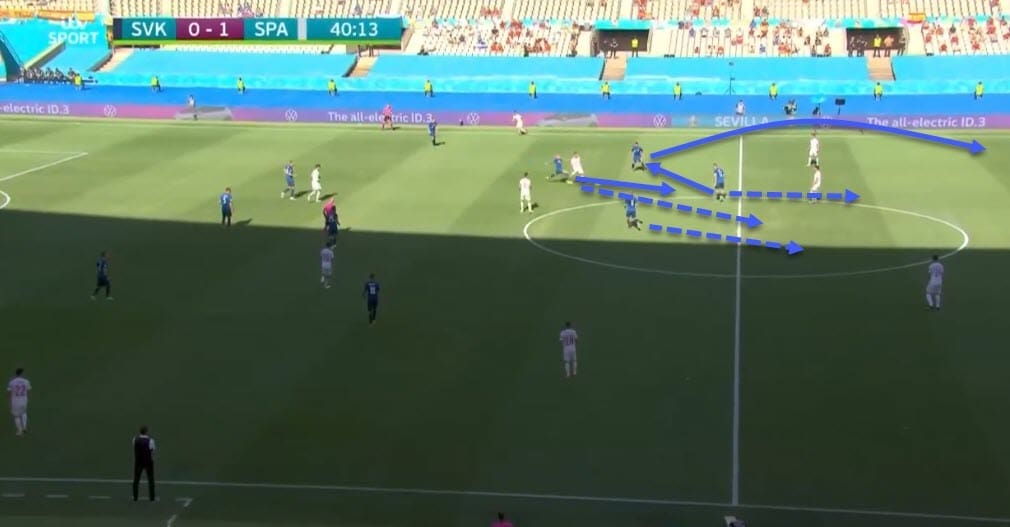
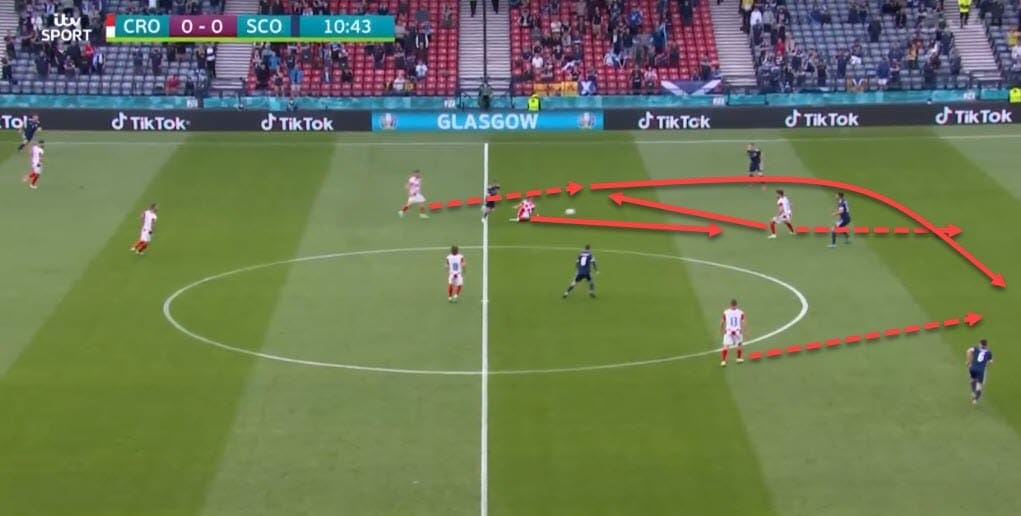
In both examples, the midfielder was pressed from behind for a high recovery and then the striker was used for a lay-off to set up runners in-behind the opposition’s defensive line. If Croatia can do the same against Spain on Monday, they might pose a real threat.
Conclusion
On paper, this match could go either way but Spain, despite lacking the final touches, have looked better across the first three games. However, with Croatia finally finding their footing, it could be a tight battle over the course of 90+ minutes.
Still, a Spain victory seems slightly more likely so we’ll go for a 2-1 win for Enrique’s men.






Comments